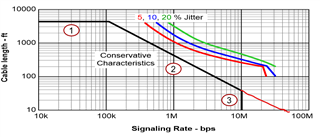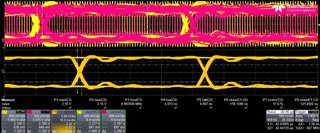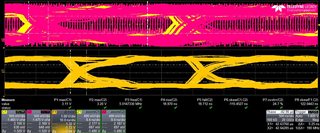Tool/software:
Hi,
We had a conversation about cable length and sampling rate in the following thread.
When using the SN65HVD78 to communicate at 50Mbps, how long can the cable be used?
Also, I would like to know about the attached graph.
Regarding the jitter in this graph, the one with less jitter (5%) has a shorter cable length and slower speed than the one with more jitter (20%).
In the graph, the one with more jitter seems to be superior, but I would like to know how to read the graph.

Best Regards,
Nishie





